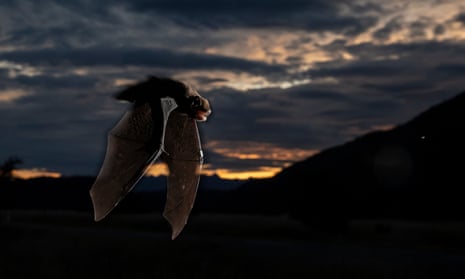New Zealand’s native birds have long been threatened by mammalian arrivals. Now, they are being thrashed by a mammal in the one arena that they might have expected dominance – the country’s annual bird of the year competition.
The election, run by Forest and Bird, allowed a surprise entry this year from the pekapeka-tou-roa, or long tailed bat, one of New Zealand’s only land-based native mammals. On Tuesday, Forest and Bird officials confirmed to the Guardian that the bat is winning in current polls by a considerable margin.
“It’s winning overall, yeah,” said Forest and Bird spokesperson Laura Keown. “Actually, when you look at the number one and number two rankings, it’s not winning by a little. It’s winning by quite a lot.”
The bat caused some consternation when it was entered in the polls, being the first mammal in the competition’s 16-year history. Keown said Forest and Bird had granted the bat entry in an effort to raise its profile as critically endangered. “Native pekapeka are among the most seriously threatened native animals that live in Aotearoa, but many people don’t even know they exist,” she said.
Trailing the bat in second place was the kākāpō – a large, flightless parrot and the competition’s reigning champ from last year. In third place was the kea, an alpine parrot known for its fierce intelligence and fondness for stealing paraphernalia from tourists.
The bat may be helped in the polls by powerful backers: New Zealand’s Ministry of Environment on Tuesday announced it was endorsing the pekapeka campaign. Voting on bird of the year closes at the end of the month and Keown said there was still time for an upset. “It’s not a foregone conclusion, anything can happen. But definitely looking at the results, the bat is the frontrunner. It’s streaking ahead.”
New Zealand’s bird of the year competition is no stranger to controversy. In 2019, the arrival of hundreds of votes from Russia sparked claims of election meddling. The votes were ultimately judged legitimate, and a Forest and Bird spokesperson said at the time that interest from Russian ornithologists may be responsible. “New Zealand actually shares birds with Russia,” they said at the time. “We have the bar-tailed godwit that makes an annual round trip.”
The year before, Forest and Bird alleged that 300 fraudulent votes were cast in the online ballot by Australians attempting to rig the contest in favour of the shag.
Keown said voting had been strong this year, with more than 33,700 votes cast so far. New Zealand’s Bird of The Year attempts to raise awareness of some of the country’s endangered wildlife. The long-tailed bat is categorised as critically endangered nationwide.
